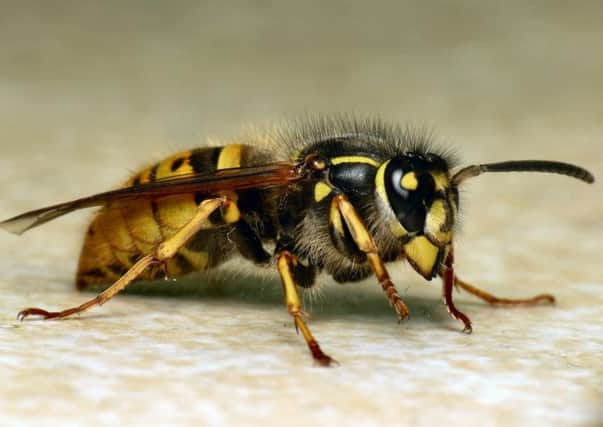Bute Museum column - Why wasps are not always the bad guys


Wasps get a pretty bad press when it comes to wasp-human interactions, and while no one would welcome a wasp nest in their close vicinity these creatures spend most of their lifetimes doing good.
The fruit they gorge on from August through to the autumn is only available quite late in the year. In the spring and early summer wasps catch and consume a great number of insect pests.
Advertisement
Hide AdAdvertisement
Hide AdWasps will also collect nectar from flowers so are useful pollinators too. So if you encounter wasps before August you will be doing your garden a favour if you let them live.
These yellow and black wasps are known as social wasps because they live in groups with each wasp having a function in a complex insect community.
There are other wasps too, which people tend to overlook because they don’t have that warning yellow and black marking and are much skinnier in appearance. These solitary wasps are a very different type of creature. They have a ‘wasp waist’ but are mostly inconspicuously coloured and don’t sting. The organ which in social wasps produces the sting is, in a solitary wasp, an ‘ovipositor’, which means the females use them to pierce the skin and lay eggs inside their victims.
Many solitary wasps find a suitable caterpillar and lay their eggs inside which then continues its life for a time before the baby wasps erupt out of the caterpillar, leaving a dead husk behind.
The interdependence of nature is also seen by what eats wasps. On the mainland it is not uncommon to find a demolished wasp nest if it is built either underground or near the ground as badgers find them particularly tasty. Birds, too, regularly feed on wasps, and although small birds such as Blue Tits will generally leave wasps alone rooks, crows and jackdaws all seem to enjoy eating them.
There are other insects in the garden in the summer that are sometimes mistaken for wasps. This is because they mimic the yellow and black warning colours of the social wasp, thus protecting themselves from sharp eyed birds on the hunt for tasty morsels for their nestlings.
These wasp mimics are hover flies, a group of insects whose larvae consume greenfly and other pests. As adults they are mostly seen hovering near flowers which they visit to feed on nectar, so like bees, wasps and moths they are useful pollinators.